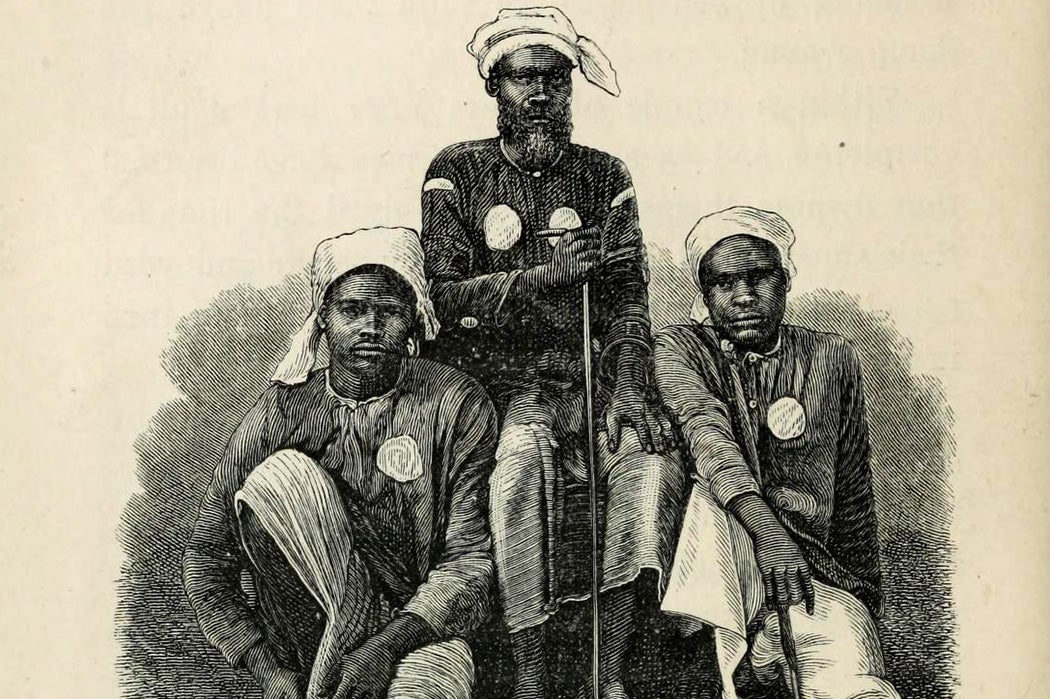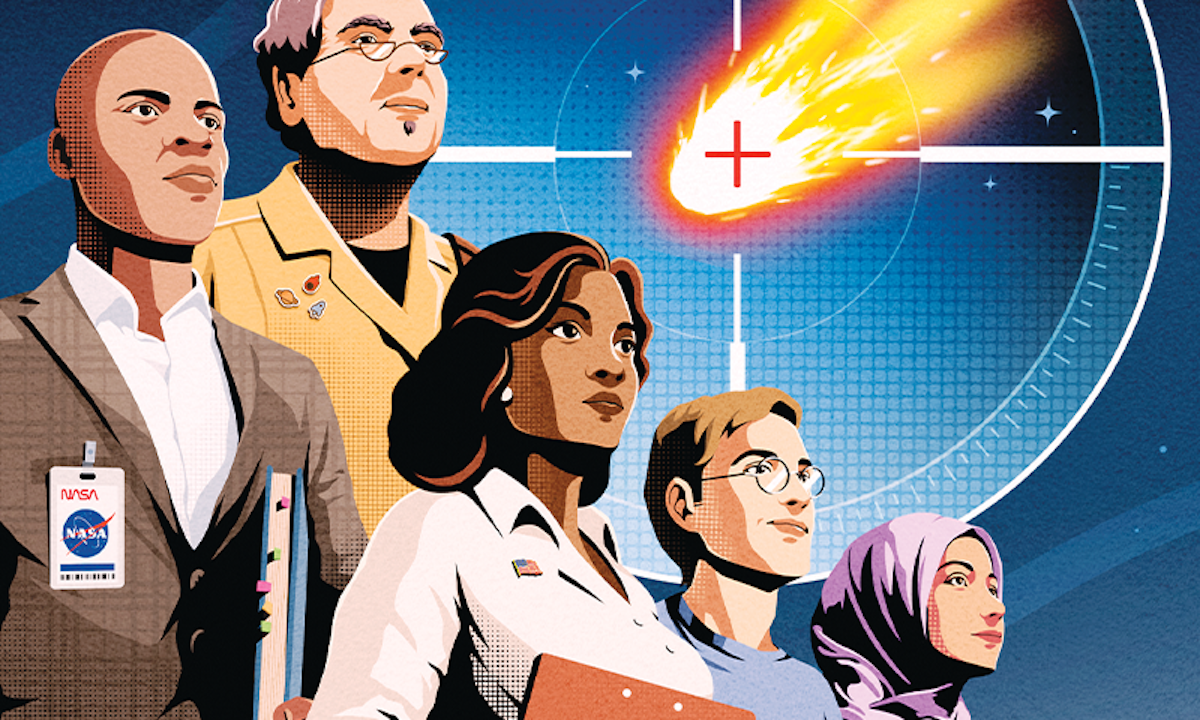He walked into the woods and disappeared for 27 years

From The Guardian: "Christopher Knight was 20 years old when he walked away from society, not to be seen again for more than a quarter of a century. He had been working for less than a year near Boston, Massachusetts, when abruptly, without giving notice to his boss, he quit his job. He never even returned his tools. He cashed his final pay cheque and left town. Knight did not tell anyone where he was going. He drove north to Maine, where he had grown up, then parked the car and tossed the keys on the console. He had a tent and a backpack but no compass, no map. Without knowing where he was going, he stepped into the trees and walked away. His departure from the outside world was a confounding mix of incredible commitment and complete lack of forethought. It was as if he went camping for the weekend and then didn’t come home for 25 years."
China’s emerging psychedelic scene looks a lot like the scene in Silicon Valley
:format(webp)/cdn.vox-cdn.com/uploads/chorus_image/image/73185891/GettyImages_1453607830.0.jpg)
From Vox: "Professor of Chinese Studies Fan Pen Li Chen writes that the history of Chinese psychedelic use is a conspicuous blank in contemporary English language accounts. In modern times, too, China has rarely been included in talks of the psychedelic renaissance. Gearin notes that ayahuasca’s introduction into modern China is similarly tough to pin down, though accounts of Indigenous ayahuasca shamans begin in the early 21st century. Gearin spent years embedded with ayahuasca users across mainland China. He chronicled the experiences of people like “Ting Ting,” a Chinese woman in her early 30s who manages a large technology firm and hopes that drinking ayahuasca will help advance her career, and “Wang,” a 34-year-old executive manager at a fast-food franchise who drinks ayahuasca to become more successful at his job."
Mbarak Mombée played a critical role in most of the 19th-century Africa expeditions

From JSTOR Daily: "In nineteenth-century Britain, rumors about “the curse of the Nile” abounded. As Nezar AlSayyad points out, most explorers who sought the great river’s source not only failed in their mission, they also met untimely and unfortunate ends. James Bruce died alone after tumbling downstairs. Richard Burton was upstaged by his travel partner John Hanning Speke, who ultimately shot himself. David Livingstone disappeared while trying to solve the Nile mystery. However, there was one who seemed immune to the curse: Mbarak Mombée, who died peacefully in 1885 at age sixty-five. It’s been estimated that Mombée, a Bantu man born in Tanzania,, traveled in excess of 9,600 land miles through Africa’s interior and arguably had a greater impact on the mapping of the continent than anyone else. But due to his race, he’s usually remembered as a supporting character in the biographies of his white counterparts."
Editor's note: If you like this newsletter, please share it with someone else. And if you really like it, perhaps you could subscribe, or contribute something via my Patreon. Thanks for being a reader!
Tracking the asteroids that might some day result in an extinction-level event

From Nautilus: "According to NASA, there are 1,351,594 known asteroids in our solar system. The number, detailed on an agency web page, increases slowly but regularly, like one of those Days Since Last Accident signs in a factory, as astronomers continue to pick them out of the heavens. The bulk of these rocky, airless remnants, as NASA terms them, are dispersed throughout what’s known as the main asteroid belt, the torus-shaped sea of ancient flotsam between Mars and Jupiter. Around 30,000 asteroids are designated Near-Earth Objects, meaning they have a trajectory that brings them within 0.03 astronomical units—around 28,000 miles—of Earth. Most of these asteroids will sail harmlessly by; and yet, over the last 100 years, there have been two meteor-caused atmospheric blasts that, had the geography and population density been a bit different, could have flattened entire cities and killed hundreds of thousands of people."
The men who helped create the metric system were imprisoned and accused of being witches

From Everything Is Amazing: "Someone pointed out that since nobody really knew how big any of these distances were (using any units of measurement), some poor, wretched souls would have to go forth into revolutionary Europe and take measurements by hand. This awful task was assigned to two astronomers: Pierre Méchain was despatched to Barcelona, while Jean-Baptiste Delambre went to Dunkirk. Their one-year mission: to seek out brave new heights by climbing extremely tall things, so they could take enough horizon-based measurements to determine the length of a metre. Well, they thought it would take a year. It actually took seven. Along the way, Delambre and Méchain would be imprisoned, injured, almost executed, scorched, frozen, mistaken for sorcerers and spies, fired, reinstated, vilified, celebrated and then vilified again. For Méchain, the task with which he had been charged would lead eventually to his death."
In 16th century Italy you could be arrested by the Fashion Police

From Medievalists: "In 1595, a Genoese man-about-town called Salvagio de Aste was spotted breaking the law. The record in Genoa’s state archives describes with remarkable precision what Salvagio was wearing that autumn day as he strolled through the square of San Siro. He sported “an embroidered cap, a silk doublet of many colours with gold buttons on the sleeves, two rings with white stones on his fingers, a jerkin and embroidered hose in black silk”. The detail with which Salvagio’s attire was noted is no accident: his showy clothing was his crime. His colourful and lavishly embellished costume had fallen foul of Genoa’s Magistrato delle Pompe, whose role it was to enforce the sumptuary laws that regulated what men and women could wear. Patrolling the streets and squares of the bustling city as arbiters of the level of ostentation that was deemed appropriate, the sumptuary magistrates were quite simply the Fashion Police."
What the thrust of a jet engine looks like
The effect of a CFM56-5B engine's thrustpic.twitter.com/dRVW96nvwX
— Massimo (@Rainmaker1973) March 19, 2024
Acknowledgements: I find a lot of these links myself, but I also get some from other newsletters that I rely on as "serendipty engines," such as The Morning News from Rosecrans Baldwin and Andrew Womack, Jodi Ettenberg's Curious About Everything, Dan Lewis's Now I Know, Robert Cottrell and Caroline Crampton's The Browser, Clive Thompson's Linkfest, Noah Brier and Colin Nagy's Why Is This Interesting, Maria Popova's The Marginalian, Sheehan Quirke AKA The Cultural Tutor, the Smithsonian magazine, and JSTOR Daily. If you come across something interesting that you think should be included here, please feel free to email me.



